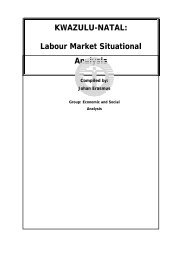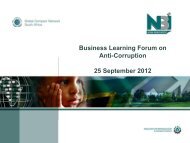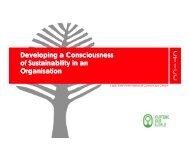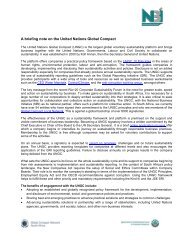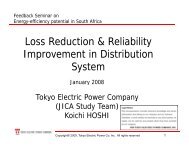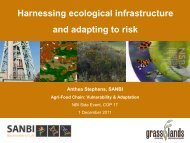Sustainable Forest Finance Toolkit - PwC
Sustainable Forest Finance Toolkit - PwC
Sustainable Forest Finance Toolkit - PwC
- No tags were found...
You also want an ePaper? Increase the reach of your titles
YUMPU automatically turns print PDFs into web optimized ePapers that Google loves.
Appendix 1: Special places 2 of 3Developed by Definition Characteristics Management preferences NotesBirdlifeInternational,ConservationInternational, andPlantlifeInternationalKey biodiversityareas (Eken et al.,2004)Building on the concept of hotspots, Conservation International is leading an effort to mapand identify key biodiversity areas. These are globally important sites that are largeenough or sufficiently interconnected to support viable populations of the species forwhich they are important.The definition is based on four criteria:• Globally threatened species• Restricted-range species• Congregations of species that concentrate at particular sites during some stage in theirlife cycle• Biome-restricted species assemblages• The first criterion addresses vulnerability of species, while the other three coverdifferent aspects of irreplaceability. Key biodiversity areas can be within biodiversityhotspots.Conservation of the sites toreduce global biodiversityloss.Groups identifying these areas include:Birldlife International (Europe, Middle East,Africa); Plantlife International and DutchDragonfly Conservation (Europe); IUCNand Alliance for Zero Extinction (global);and Conservation International (Andes andAfrica). More details at www.plantlife.org.ukFinnish <strong>Forest</strong>CertificationSystemKey biotopes(Mikkelä et al., 2001;FFCS, 1999)• Sites designed for protection under the Finnish Nature Conservation Act, such as wildwoods rich in broad-leafed deciduous species, hazel woods, juniper and woodedmeadows.• Habitats recognised as especially valuable under the Finnish <strong>Forest</strong> Act, such as thesurroundings of springs and streams, hardwood spruce swamps, and heath land forestislets on un-drained wetlands.• Additional habitats such as old-growth conifer forests, mixed forests and broad-leavedforests, and forest meadows in traditional landscapes.• Small water biotopes listed in the Finnish Water Act.Key biotopes are to be leftin their natural state andonly subject to gentlemanagement operations.Guidelines for assessing and protecting keybiotopes have been produced (Korpela,2004); key biotopes have been identified bydifferent stakeholders.<strong>Forest</strong>Ethics,Natural ResourcesDefense Council,Rainforest ActionNetwork,GreenpeaceEndangered forests(<strong>Forest</strong> Ethics et al.,2006)<strong>Forest</strong>s that require protection from intensive industrial use in order to maintain theiroutstanding ecological values. Endangered forests include: forests that maintainlandscape integrity; rare forest types; forests with high species richness; forests with ahigh concentration of rare, endangered and endemic species; forests that provide corehabitat for focal species; and forests that exhibit rare ecological and evolutionaryphenomena. Endangered forests are identified as:• Wilderness forests and intact forest landscapes• Remnant forests and forests with restoration values• <strong>Forest</strong>s ecologically critical for the protection of biological diversity, such as naturallyrare forest types, high endemism, or the habitat of focal conservation speciesNo intensive industrialactivities or extraction. ‘Nogo’zones. Endangeredforests are defined as asubset of HCVFs due totheir outstanding ecologicalvalues.<strong>Forest</strong>Ethics and its partners are working todefine and map endangered forests of theworld. The definition is meant tocomplement certification of loggingoperations under FSC(www.forestethics.org).FSCHigh conservationvalue forests (HCVF)(FSC, 1996)• <strong>Forest</strong>s that contain globally, regionally, or nationally significant concentrations ofbiodiversity values• Globally, regionally, or nationally significant large landscape-level forests• Rare, threatened or endangered ecosystems• <strong>Forest</strong> areas providing basic services of nature in critical situations• <strong>Forest</strong> areas fundamental to meeting basic needs of local communities• <strong>Forest</strong> areas critical to local communities’ traditional cultural identityManagement to maintain orenhance features of theseforests.A variety of tools have been developed tohelp identify these sites, including:• a toolkit (www.proforest.net)• a resource network (www.hcvf.org)• a sourcebook (www.proforest.net)• There are various efforts to identifyHCVFs in Indonesia, Russia, Romaniaand other countries.Page 82pwc



